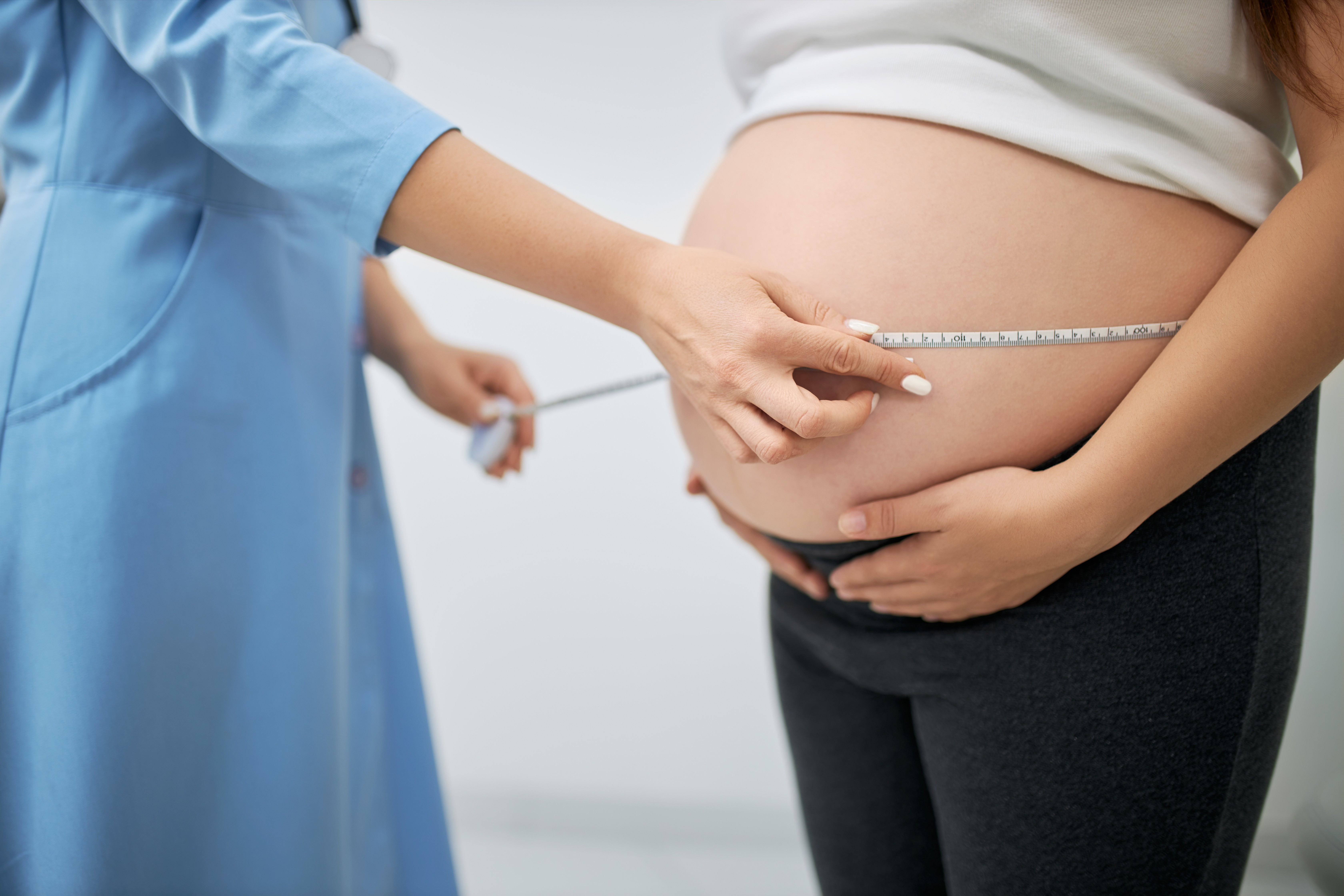Definition
Fetal position abnormalities, also known as fetal malpresentation, are conditions in pregnant women in which the fetus's lowest part is not the crown or head. This condition can lead to prolonged and obstructed labor. In a normal delivery, where the baby is born through the vagina, the optimal position is when the back of the baby's head is in the mother's pelvis, facing the birth canal, allowing the baby to be born headfirst. In malpresentation, the presenting part of the fetus in the birth canal can be the baby's face, brow, feet, buttocks, shoulders, or arms. This condition increases the risk of requiring alternative delivery methods such as forceps, vacuum extraction, and cesarean sections.
Malpresentation occurs in 3–4% of all pregnancies. The incidence is higher in younger gestational ages, occurring in 7-10% of pregnancies at 32 weeks and 25-35% at 28 weeks of gestation.
The following are some examples of fetal position abnormalities:
- Breech Presentation
In this presentation, the lower body of the baby is in the birth canal, and the head is at the top. Breech presentation is divided into four types, including complete breech, incomplete breech, one or both feet in the birth canal, and breech with both feet folded up near the face
- Transverse Presentation
In this position, the fetus is horizontal, lying sideways from right to left in the uterus. The baby’s head is on either the right or left side of the mother’s abdomen. A fetus in a transverse lie can move until close to delivery to find the best position. However, if the fetus does not change position by 36 weeks, a cesarean section is recommended, as a vaginal birth can be dangerous for both the mother and baby.
- Brow, Chin, and Face Presentation
This presentation is characterized by the baby looking upward, with the brow, chin, or face presenting. This type of presentation is the least common.
Causes
The exact cause of fetal malpresentation is not definitively known, but researchers believe there is a connection between pregnancy history, the shape of the mother's pelvis and uterus, and uterine abnormalities with fetal malpresentation.
Risk Factor
Risk factors for fetal malpresentation include:
- Young gestational age and premature labor
- Uterine structural abnormalities
- Uterine cysts or tumors
- Fetal abnormalities
- Polyhydramnios or excessive amniotic fluid
- Multiple pregnancies
- Narrow maternal pelvis
- History of premature labor
- Second pregnancy
- Placenta previa (placenta covering the birth canal)
Read more about the Placenta Previa here: Placenta Previa - Definition, Cause, Symptom, And Treatment
Symptoms
There are no specific symptoms of fetal malposition, but a pregnant woman might suspect malpresentation if she feels kicks on the right or left side of her abdomen and in the lower abdomen.
Diagnosis
Diagnosis involves a combination of medical history interviews, physical examination, and supporting tests.
- Medical history interview: The doctor will ask about the patient’s complaints, current pregnancy history, previous pregnancy history if any, any uterine diseases, history of certain medications, daily activities, and family medical history.
- Physical examination: As in routine pregnancy check-ups, the doctor or midwife will examine the patient’s general condition, starting with blood pressure, respiratory rate, pulse, and body temperature. This is followed by measuring the length of the uterus and palpating the abdomen to determine the fetus's position. The doctor may also check the fetal heartbeat to help estimate the fetus's position and presentation. A vaginal examination may also be performed if necessary.
- Diagnostic tests: An ultrasound (USG) is conducted to directly observe the fetus's position and presentation at the time. Ultrasound is the most recommended and accurate method to assess fetal position and presentation. Besides detecting these, ultrasound can also estimate fetal weight, assess fetal growth disorders, detect fetal abnormalities, and determine the placenta's location.
Management
Treatment for fetal malpresentation can be medical or non-medical.
Examples of non-medical treatment are as follows:
- Pregnancy exercise and yoga
Certain pregnancy exercises and yoga poses can help rotate the fetus’s position. Well-known movements that can assist in repositioning the fetus include the child’s pose, knee-chest position, and breech tilt (lifting the pelvis). If these movements are done regularly before 36 weeks of gestation, the likelihood of the fetus rotating to an optimal position increases.
- Music and light therapy
Music and light therapy can stimulate the fetus to move into an optimal position and presentation. This can be done by playing music or directing a light source, such as a flashlight, towards the lower abdomen.
In addition, external cephalic version, or ECV, procedures can be performed for medical therapy. This procedure is performed at 37-38 weeks of gestation, considering other maternal conditions allow for vaginal delivery, amniotic fluid is sufficient, the fetal membranes are strong, and there are no other pregnancy complications such as fetal growth disorders, transverse fetal position, persistent transverse lie near delivery, bleeding, multiple pregnancies, and others.
Complications
Several complications of fetal malposition include:
- Fetal injury
- Uterine injury
- Birth canal injury
- Uterine rupture
- Umbilical cord around the fetus
- Obstructed labor or fetus stuck in the birth canal
- Umbilical cord prolapse (cord exiting the birth canal before the baby)
If you want to know more about umbilical cord prolapse, you can read it here: Umbilical Cord Prolapse - Definition, Cause, Symptoms And Management
Prevention
If the gestational age is under 36 weeks, there is no need to worry about fetal malpresentation, as the fetus usually rotates and finds its position naturally. There is no medically proven method to prevent fetal malpresentation, but it doesn't hurt to do regular pregnancy exercises and yoga to help create space in the uterus and pelvis, giving the fetus ample room to find the optimal presentation. Regular pregnancy check-ups are also recommended to monitor fetal development so that if malpresentation or other dangerous conditions occur, they can be anticipated properly.
When to See a Doctor?
Seek immediate medical attention at any gestational age if you experience emergency signs such as bleeding, leaking or ruptured amniotic fluid, excessive nausea and vomiting, unusual abdominal pain with increasing intensity, or decreased fetal movement.
Looking for more information about other diseases? Click here!
- dr. Monica Salim
Patient - Malpresentations and Malpositions. (2021). Retrieved 3 November 2022, from https://patient.info/doctor/malpresentations-and-malpositions
Piliod RA., Caughey AB., (2017). Fetal Malpresentation and Malposition: Diagnosis and Treatment. Retrieved 3 November 2022, from https://www.sciencedirect.com/science/article/abs/pii/S0889854517301134?via%3Dihub
Pregnancy Birth and Baby - Malpresentation. (2021). Retrieved 3 November 2022, from https://www.pregnancybirthbaby.org.au/malpresentation







